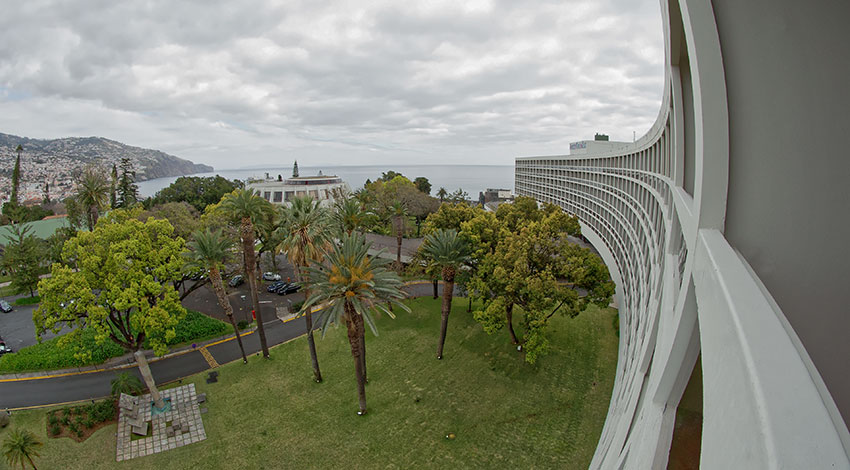Oscar Niemeyer was a brilliant man. He mastered the curved line like no other and left his mark in Madeira.

"It is not the right angle that attracts me,
nor the straight line, hard and inflexible,
created by man.
What attracts me is the free and
sensual curve – the curve that I find in
the mountains of my country, in the sinuous course
of its rivers, in the clouds in the sky, in the body
of the beloved woman.
The whole Universe is made of curves
The curved Universe of Einstein."
Poema da Curva, 1988 by Oscar Niemeyer
We are talking about Oscar Ribeiro de Almeida de Niemeyer Soares Filho, or simply Oscar Niemeyer: Born in Rio de Janeiro on December 15 1907, he died in that same city in 2012 at the age of 104. Graduated from the National School of Fine Arts in Rio de Janeiro, he completed his studies in 1934 when he was awarded an engineer/architect diploma.
He started working in Lúcio Costa’s office in 1935 and this partnership would last long enough to produce some of the most important works in the history of modern architecture. When he joined the team that was working on Brazil’s Ministry of Education and Health Building he met Le Corbusier through Lúcio Costa.
Corbusier was in Rio de Janeiro working as a consultant for the Ministry of Education and the University town projects, two emblematic Brazilian buildings. The two worked well together and even collaborated in different projects later on.
His first project was built in 1937, Obra do Berço. In 1939 he works with Lúcio Costa on Brazil’s Pavilion in the New York World Fair.
The Pampulha Architectural Complex stands out from his work where he met Juscelino Kubitschek, known as JK. At the time he was Belo Horizonte’s Mayor and after having been elected the President of Brazil, invites Oscar Niemeyer to design Brazil’s new capital, Brasília. JK also appoints him as Novacap’s Department of Urbanism and Architecture, the company responsible for Brasília’s construction.
The military regime encouraged him to leave the country and he decides to accept the many international invitations we was offered, such as the Mondadori Publisher main office in Italy, the Constantine University in Algeria or Le Havre’s Cultural Centre in France, to name a few.
As for Portugal, Oscar Niemeyer has designed a small scale project that he hasn’t signed for since he didn’t consider the final project his own: He told a Portuguese newspaper that his idea was developed and altered by Viana de Lima, a Portuguese architect graduated in Oporto.
We are obviously referring to Casino Park Hotel that includes a casino and a congress centre. This project was ordered by Sociedade de Investimentos Turísticos da Ilha da Madeira, Barreto family property. The project had been talked about in 1966; however, works didn’t start until six years later. The space was finally inaugurated on October 3, 1976.
There is a publication on this building named “Our Niemeyer”, where the story of the project and its execution is told in more detail.
Oscar Niemeyer returned to Brazil after the dictatorship slowdown, where he continued to work until shortly before his death. He designed the Juscelino Kubitschek Memorial in Brasília in 1980, right after having returned. In 1984 he designs the Sambodromo project. His work level was remarkable and in 1991 he designs the Niteroi Contemporary Art Museum, removing yet again any sense of weight and structural effort from the building. His creations look as if they were landing softly on the ground.
He continued to create and develop several projects almost until he died. According to the Niemeyer Foundation, he finished his project for the Arabic and South American countries Library in Argel, Algeria’s Capital in 2009, alongside other projects.














